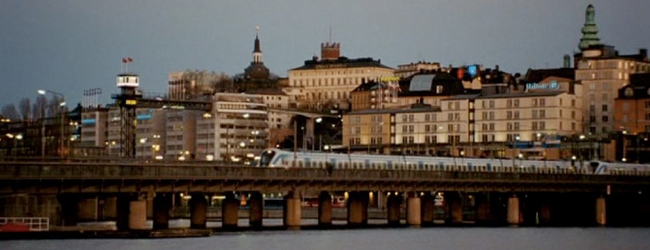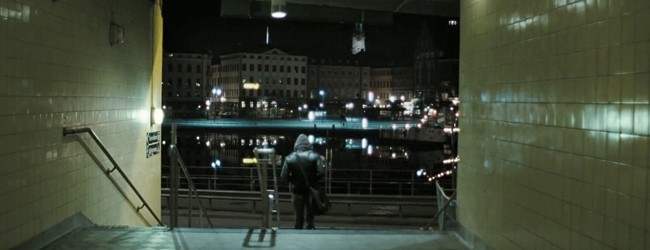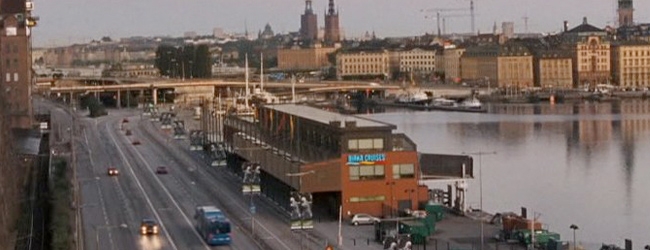Sweden considers film tourism value ahead of David Fincher’s Girl with the Dragon Tattoo
Film tourism has become a way for countries to benefit from a high-profile production for years after the crews have wrapped. A few months ahead of of David Fincher’s version of The Girl with the Dragon Tattoo, a report is considering the film tourism legacy of the Swedish Millennium Trilogy.
The term ‘film tourism’ relates to the concept of film fans choosing to visit a particular place in the world because they’ve seen it in a film they like. It’s impossible to measure the full impact that a popular film or franchise has, but tourism certainly has a tendency to increase when a specific location features in a popular film.
Sweden is taking inspiration from successes in places like New Zealand, in maximising the popularity of Stieg Larsson’s Millennium Trilogy. The popularity of the original novels and the Swedish-language film trilogy will get another boost this year when David Fincher’s adaptation reaches cinemas.
New Zealand has been the highest-profile beneficiary of film tourism in recent years, with the Lord of the Rings trilogy leading directly to the establishment of a filmmaking empire in this far-flung corner of the world. Sweden is taking inspiration from this, among other examples, in maximising the popularity of Stieg Larsson’s Millennium Trilogy. The popularity of the original novels and the Swedish-language film trilogy will get another boost this year when Fincher’s adaptation reaches cinemas.
The Swedish Government has commissioned a study, The Millennium Report, into the impact of film tourism, and the report draws on figures from around the world in its analysis. Tourism in New Zealand increased 400% in the aftermath of Lord of the Rings. More recently visitor numbers to Antony House in Cornwall in the UK leapt by 400% after the house appeared in Tim Burton’s Alice in Wonderland. A key point, however, is that increased tourist figures tend to relate to the specific locations featured in the films - a house or building - rather than extending to the wider local region.
Joakim Lind, a media analyst and lead consultant at Cloudberry Communications in Stockholm, produced The Millennium Report with Madeleine Sparre, an analyst at Oxford Research. Lind commented: “Of course you can show great effects on tourism if you only look at a very small place or a place with no tourism to start with. And the bigger a region you look at the smaller the effects get. But I think location exposure of an identifiable place brings value despite what kind of film it is.”
Part of the Swedish study looks at estimating the exposure value of a location, or how much it would cost to deliver similar exposure in a more conventional commercial format. The exposure value changes depending on what format the film is being viewed on (cinema, DVD, TV and so on), as these media have different audience sizes and conventional advertising costs differ too.
People in the business understand the value film production and film brings to a region, but people outside do not see it so clearly. For them you must be able to present facts and good arguments. I would like to see a developed discussion of what values film brings to people and places.
Joakim Lind, Cloudberry Communications
Despite all the difficulties and uncertainties associated with calculating the true film tourism impact of the films, The Millennium Report highlights the results of questioning a sample of people exploring the Stockholm City Museum in the spring of 2010, and the city’s Tourist Centre in January 2010. Out of a relatively small sample of 125 people from different countries, eight tourists at the museum said the Millennium Trilogy had specifically inspired them to visit Stockholm. Fifteen people were questioned at the Tourist Centre and all were aware of the Millennium Trilogy, although it’s difficult to draw conclusions about the extent to which these people made the trip because of it.
The figures from film commissions and tourist boards around the world clearly indicate that film tourism is a significant phenomenon. Aside from noting general increases in admissions and hotel nights, though, the precise impact is much harder to quantify. Perhaps, also, the way in which a location is portrayed on-screen may be a factor. Lord of the Rings puts New Zealand’s sweeping natural grandeur front and centre and is an easy sell, but The Millennium Trilogy doesn’t glamorise Stockholm in the same way.
Lind adds: “I am well aware of the difficulties in measuring [the impact of film tourism]. People in the business understand the value film production and film brings to a region, but people outside do not see it so clearly. For them you must be able to present facts and good arguments. I would like to see a developed discussion of what values film brings to people and places.”
Of course, conventional glamour isn’t always necessary to make an impact. Hotel night purchases in Staden Forks, Washington State, have increased by a massive 1,000% since the Twilight franchise took the world by storm. That’s despite the town’s on-screen representation being essentially a rain-swept wilderness in a relatively backwater part of the US. While Stieg Larsson has clearly amplified Sweden’s international profile, the long-term impact of the original Millennium Trilogy and a potential English-language franchise (see trailer below) will be fascinating to watch.
City images courtesy of Eric Kress/Jens Fischer, Yellow Bird.
Related Posts
- Modern Family Australia episode could boost film tourism as US ratings hit
- Filming in Swedish Lapland with Location Scout Susanne Karlsson
- Filming in Stockholm with Location Scout Susanne Karpati
- On location with Michael Brook, Manager of Screen Auckland
- Film NZ chief Gisella Carr on New Zealand’s location filming future
- Filming in Stockholm with Location Manager Christian Rudheim
- Film London awarded funding for film tourism initiative EuroScreen
- Eleisha McNeill: Working as a TV fixer on location in New Zealand
Related posts:
Comments
Not Logged in
You must be logged in to post a comment





There are no comments